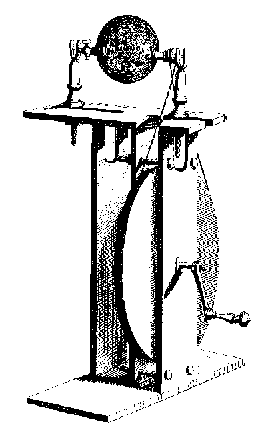Electricity and magnetism have been know about for a long time. Static electricity was known of by the ancient Greeks. Thales of Miletus observed about 500 years BC that amber (amber is essentially ancient solidified tree sap) objects when rubbed attracted bust, and magnets, which align with the Earth's magnetic field to point to the Earth's north pole have been know about since the Chinese discovered lodestone in the first century BC, but investigation did not advance for a long time. The phenomenon of electrification by friction was not investigated for about 1500 years and it was not until William Gilbert, a scientist in the sixteenth and early seventeenth centuries, that electricity and magnetism were understtod to be separate phenomena.
About 1660, a massive advance made the systematic investigation of electricity possible. It was the electrostatic generator. Invented by Otto von Guerick, it consisted of a globe of sulphur rotating on an axis and was charged by friction.

He was able to show the globe could attract a wide range of objects, and he also observed electrostatic repulsion. Objects attracted to the globe often repelled each other.
Stephen Cray in the seventeenth and eighteenth centuries first introduced the ideas of materials being either conductors or insulators. He also discovered that an electrostatic charge could be induced on a body without their being in contact. Soon afterward, Volta built the first battery.
These early investigations were very rudimentary. For electricity and magnetism to be fully understood, mathematical tools – vectors and calculus - and new physical ideas – fields and potential – needed to be introduced.
